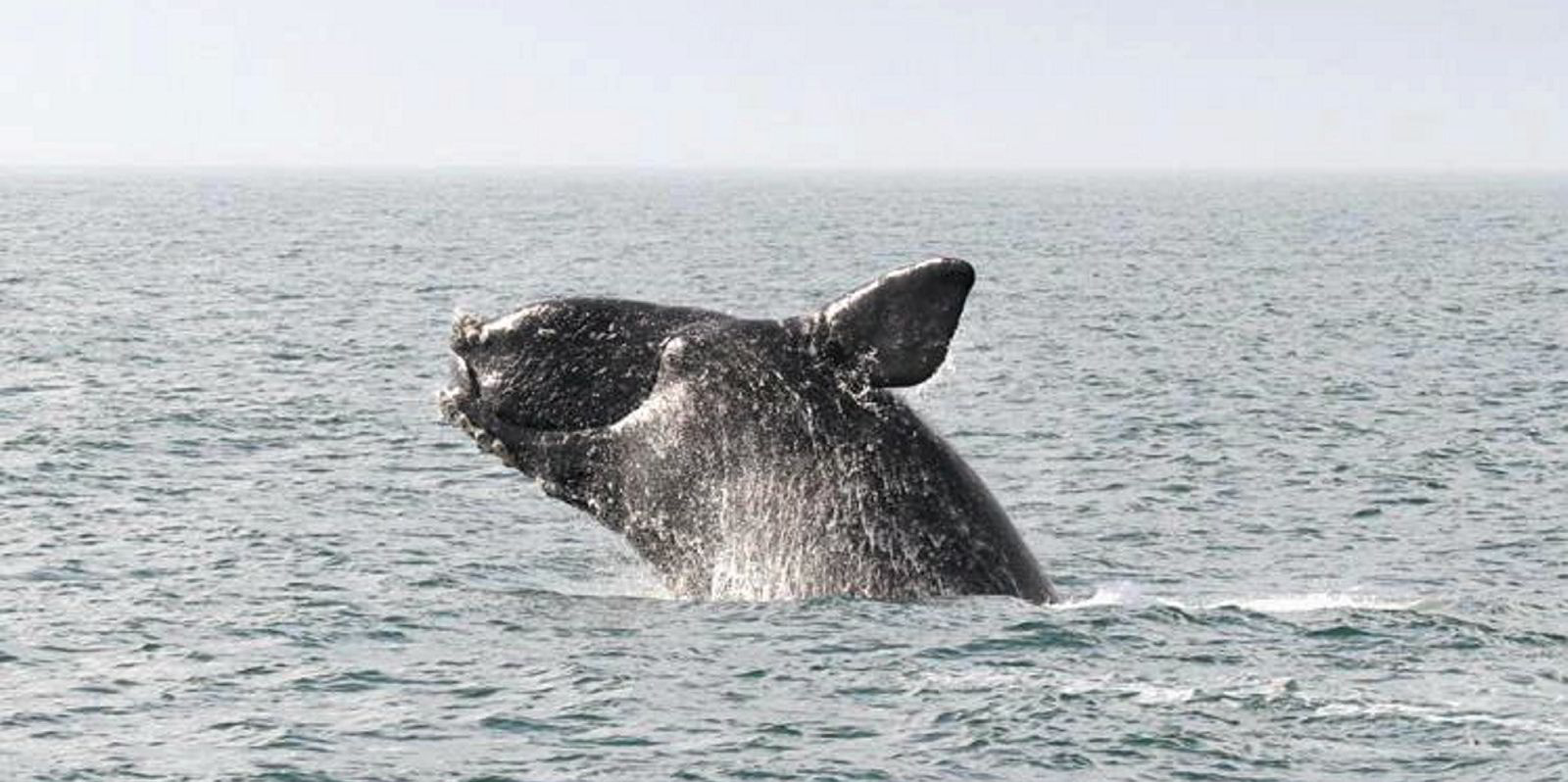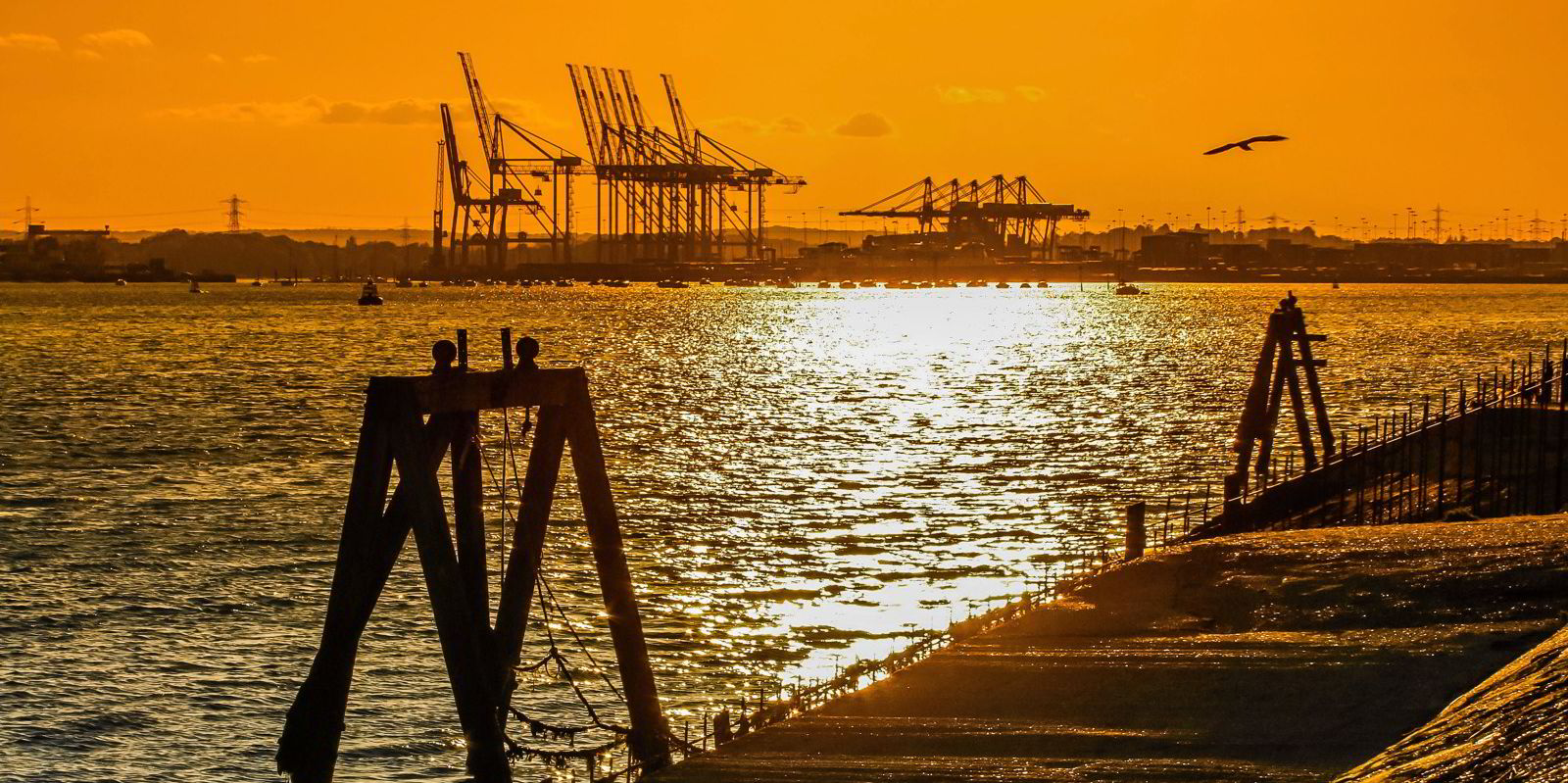Merchant ships are violating speed limits in place off the US East Coast that are designed to protect the North Atlantic right whale, one of the world’s most endangered whale species.
But how many ships are flouting these rules? The answer to that question depends on how you look at the data.
A report by conservation group Oceana found that 84% of vessels travelling through zones in the Atlantic where speed restrictions are mandatory exceeded the limit of 10 knots (19 kph) at the times when the seasonal rules were in place.

The group said 40% of those speeding ships and boats were cargo vessels.
But NOAA Fisheries, the arm of the US government’s National Oceanic and Atmospheric Administration that oversees whale conservation, recently released a new online dashboard that it said shows “high overall vessel compliance” with the mandatory speed limits.
Gib Brogan, fisheries campaign director at Oceana, said the gap between his organisation’s findings and NOAA Fisheries’ take is a result of looking at the same data set in different ways.
Oceana used vessel tracking data to count the number of vessels breaking the speed restrictions, even if they briefly exceeded the 10-knot limit, whereas the US federal government’s dashboard counts the number of miles travelled above the limit.
But in both cases, the data shows that commercial ships are flouting the speed limits at a time when right whales are particularly vulnerable to shipping traffic.
That is important because collisions with vessels are among the top causes of North Atlantic right whale deaths.
But the North Atlantic right whale population is teetering at the edge of extinction, with fewer than 350 remaining amid a pattern of elevated deaths that NOAA Fisheries describes as an “unusual mortality event” that began in 2017.
“The government tells us that fewer than one a year can be killed by all human causes put together if we’re going to let the species come back,” Brogan told Green Seas.
That literally leaves no room for error.
“The status of the species is so dire that a lot of the science that’s coming out right now is talking about extinction — the probability of either outright extinction or what they call quasi-extinction, where there will still be some whales alive but not a viable population,” Brogan said.
Yet NOAA Fisheries’ data shows that container ships alone travelled more than 43,500 nautical miles (80,600 km) above the speed limit in zones where the restrictions are mandatory, compared to 164,000 nautical miles at or below the speed limit. The dashboard covers the months from November 2022 to July of this year.
Overall, the data shows that for all vessel types, some 348,000 nautical miles, or 22.5% of the total, of voyage distance travelled in mandatory speed zones were above the speed limits.
Ship strikes stand alongside entanglement with fishing equipment as top human-made causes of death for North Atlantic right whales, and speed reductions are a widely accepted way of helping prevent the collisions. The species is also vulnerable to ocean noise, which can also be reduced by slowing vessel traffic.
A NOAA Fisheries population viability analysis released earlier this month found that vessel strikes and fishing entanglements need to be reduced considerably “for the species to continue to exist”.
The agency is working to expand existing mandatory speed zones, and it hopes to finalise the new rules by the end of this year.
But Oceana’s report showed that there was little difference between mandatory speed zones and voluntary limits. Some 82% of vessels exceeded speed limits in places where they were voluntary, with cargo vessels making up 42% to 50% of those voyages.

The group argues that current safeguards are not enough. Whale migratory patterns have shifted to places not covered by speed rules, there are not enough areas with mandatory limits and compliance is too low.
Oceana wants updates to those speed restriction zones, and it is calling for voluntary areas to be converted into mandatory zones. The group also wants rules expanded to vessels smaller than the current minimum of 65 feet (20 metres) in length, as well as more stringent monitoring and enforcement.
Brogan said shipping companies face fines in the tens of thousands of dollars, which pale in comparison to the commercial penalties for delayed arrivals.
“The incentive for compliance just isn’t there,” he said. “And we need to do a lot better. The government tells us that if these rules are going to be effective, we need near 100% compliance. And we’re a long way away from there.”
___________
Podcast: The future of ship recycling after the Hong Kong Convention
The Green Seas podcast travelled virtually to Singapore for a discussion on the ship demolition sector after new global rules on safely and environmentally friendly recycling vessels became law.
We hear from Mohammed Zahirul Islam, managing director of PHP Ship Breaking & Recycling Industries; cash buyer GMS chief executive Anil Sharma; Hapag-Lloyd regulatory affairs director Wolfram Guntermann; Kumiko Iwasa, chair of the recycling committee at the Japanese Shipowners’ Association; Anette Ronnov, chief sustainability officer at Wallenius Wilhelmsen; Jesselynn Lai, head of public affairs for South East Asia and Oceania at AP Moller-Maersk; and Sotiris Raptis, secretary-general of the European Community Shipowners’ Associations.
They were speaking at the TradeWinds Ship Recycling Forum.
___________
Ports seen as ‘key node’ in UK’s cross-sector efforts to decarbonise freight transport
Ports can serve as a key nexus for what should be a multi-modal effort to decarbonise Britain’s road, rail and maritime freight, the Decarbonising UK Freight Transport network has concluded in a report.
The group, one of five transport networks funded by the UK Engineering and Physical Sciences Research Council, came to the findings after six research projects and two stakeholder events aimed at accelerating investment in decarbonising the country’s freight sector.
“Ports are key nodes in the UK freight sector’s decarbonisation,” the network said in the report. “They are both interfaces between the modes (road, rail and shipping), but also represent locations where infrastructure and decarbonisation solution synergies are most likely exploited.”
___________
US offshore wind vessel orders accelerate at a crawl as shipyards struggle
The number of service operation vessels on order at US shipyards to serve the nation’s offshore wind sector has surged by 50% over the past year.
That sounds like a big jump, but it means that where there were two SOV newbuildings under construction this time last year, there are now three, according to data from shipbroking giant Clarksons.
A variety of factors, including rising newbuilding prices, shipyard labour shortages and an offshore wind farm project pipeline that has continued to slide, has led to delays in pondering these ships and others to serve this burgeoning market, which has been seen as a major opportunity for the US shipbuilding sector, experts in the market told TradeWinds.





